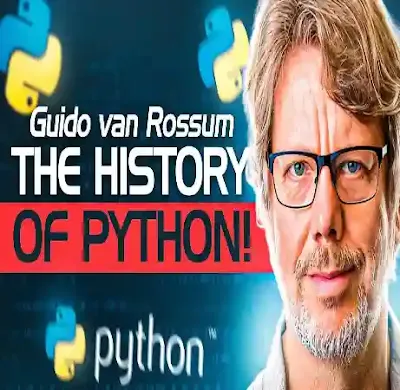PYTHON HISTORY
Python is a popular programming language.
It is designed by Guido van Rossum in 1991.
Nowadays, Python is one of the most popular and widely used programming language all over the world.
It is a high-level programming language. It's syntax allows programmers to express concepts in fewer lines of code.
It is used for set of tasks including console based, GUI based, web programming and data analysis.
Python is a easy to learn and simple programming language so even if you are new to programming, you can learn python without facing any problems.
Story behind Python's invention
In the late 1980s, working on Python started by Guido Van Rossum. He began doing its application-based work in December of 1989 at Centrum Wiskunde & Informatica (CWI) which is situated in the Netherlands. It was started as a hobby project because he was looking for an interesting project to keep him occupied during Christmas.
From ABC language to Python
The success of Python programming language came from ABC Programming Language, which was operating on Amoeba Operating System and had the feature of exception handling. Guido Van Rossum had already helped create ABC language earlier in his career and had seen some issues with ABC language but liked most of the features. While creating Python, he had taken the syntax of ABC language, and some of its good features also. Initially it came with a lot of complaints too, so he fixed those issues completely and created a good scripting language that had removed all the flaws.
Named Python after a TV Show
The inspiration for the name came from the BBC’s TV Show – ‘Monty Python’s Flying Circus’, as Guido Van Rossum was a big fan of the TV show and also he wanted a short, unique and slightly mysterious name for his invention and hence he named it Python! For quite some time he worked for Google, but currently, he is working at Dropbox.
Evolution of Python
The language was finally released in 1991. When it was released, it used a lot fewer codes to express the concepts, when we compare it with Java, C++ & C. Its design philosophy was quite good too. Its main objective is to provide code readability and advanced developer productivity. When it was released, it had more than enough capability to provide classes with inheritance, several core data types of exception handling and functions.

